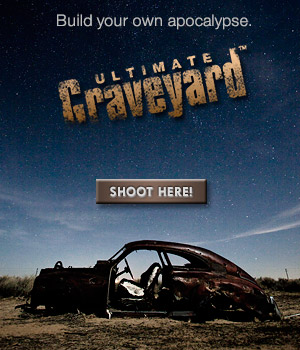Archive for the ‘Awesome Shooting Locations’ Category
WMB 3D Issue 2 Fashion Feature: Warehouse Wonderland




WMB 3D‘s recent fashion feature has readers and artists buzzing, so I thought it appropriate to devote the first Issue 2 post to Warehouse Wonderland.
I’ve always found amazing locations to be fantastic sources of inspiration. When I stumbled upon this forgotten machine shop in downtown Los Angeles, it was love at first sight. The exposed framework, massive steel crane hooks, and natural sunlight would create perfect contrast for a fashion-forward piece.
I re-teamed with brilliant stylist Monica Rose, who did an amazing job of helping me bring our latest apocalyptic vision to life. I also had the pleasure of working with two of my favorite artists: makeup artist Gaby Ramos and hair stylist Gio Campora, who delivered electrifying flair within each frame.
Model Aryn Livingston handled the complex shoot like a champ, never complaining as we had her climb ladders, lie on cold metal, or precariously walk an elevated girder (in heels!)
The unique layout of the warehouse also created several unique shooting situations, including multi-level landing camera setups. For many shots, we redirected tiny pools of sunlight using multiple mirrors to get the sun to frame Aryn correctly.
Go behind-the-scenes of WMB 3D‘s Warehouse Wonderland shoot thanks to these amazing stills and video from photographer Joyce Park and director David Rivera.
Credits:
Photography by NICK SAGLIMBENI
Styling by MONICA ROSE
Hair by GIO CAMPORA for The Wall Group
Makeup by GABY RAMOS
Download WMB 3D Issue #2 from iTunes App Store, Android Market, or 9×12″ Limited Print Issue.
Exploring Kenya for WMB 3D
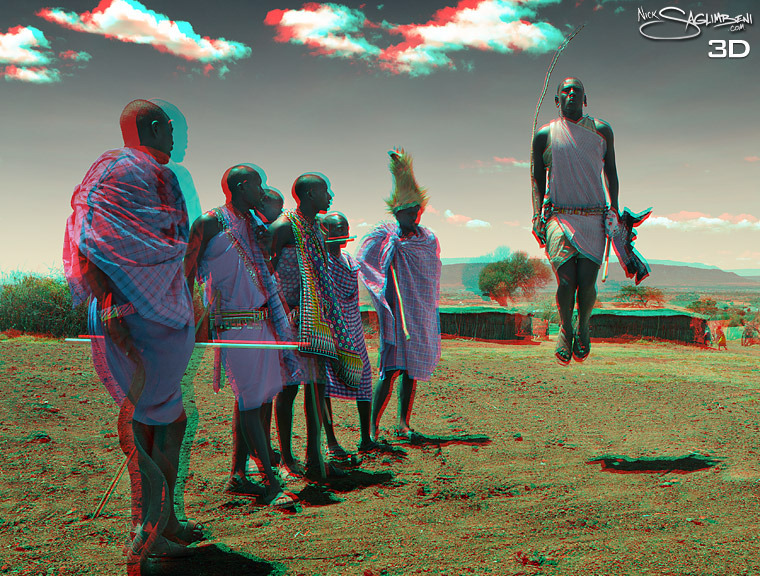
Maasai Mara: The men of Oltepesi village perform the Moran dance to display their strength as tribal warriors.

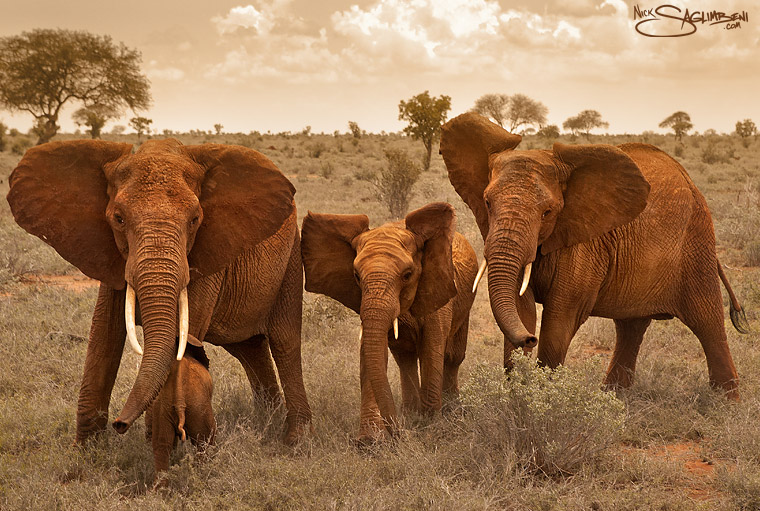
The infamous red elephants of Tsavo square off to protect their young.
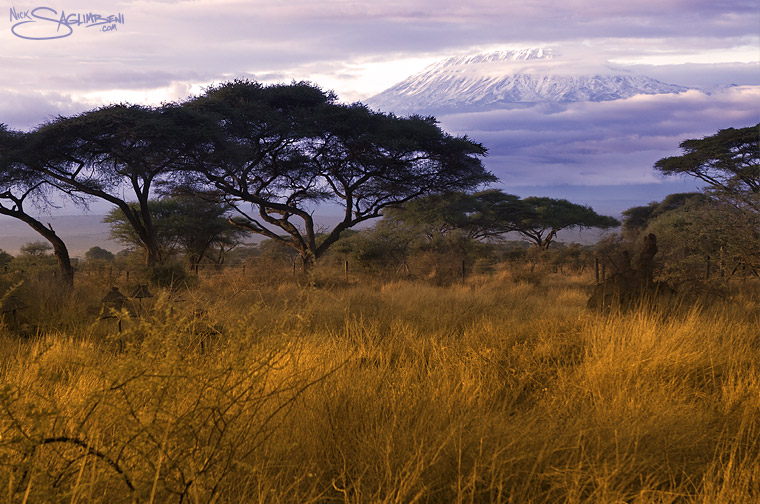
Amboseli: Morning clouds part to reveal Mt. Kilimanjaro behind the acacia trees
Just before the holidays, I had the pleasure of returning to one of my favorite places in the world—Kenya—for issue 2 of WMB 3D. I reunited with my good friend Ali at Vumbi Jeep Safaris, and we embarked on a whirlwind tour of the country. I visited my Maasai friends in Oltepesi village from my first trip to Kenya, and then we explored the wild, capturing breathtaking sites in stunning 3D. For the full gallery in both 2D (ex: elephants above) and 3D (ex: Maasai tribe above), grab your copy of WMB 3D #2, and check out the video above for a behind-the-scenes look at my adventures.
WMB 3D: “Nuclear Summer” Fashion Shoot
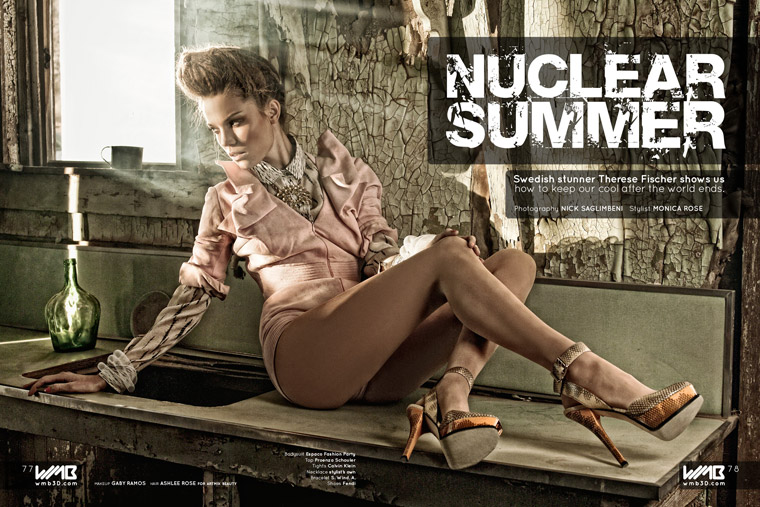
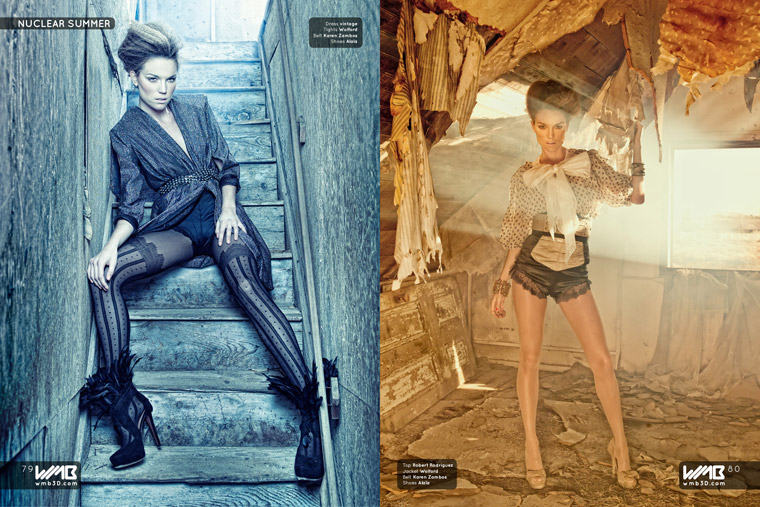
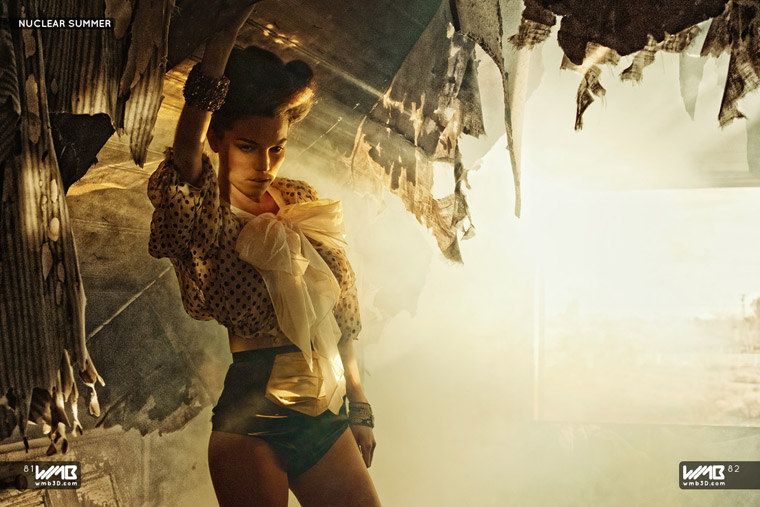
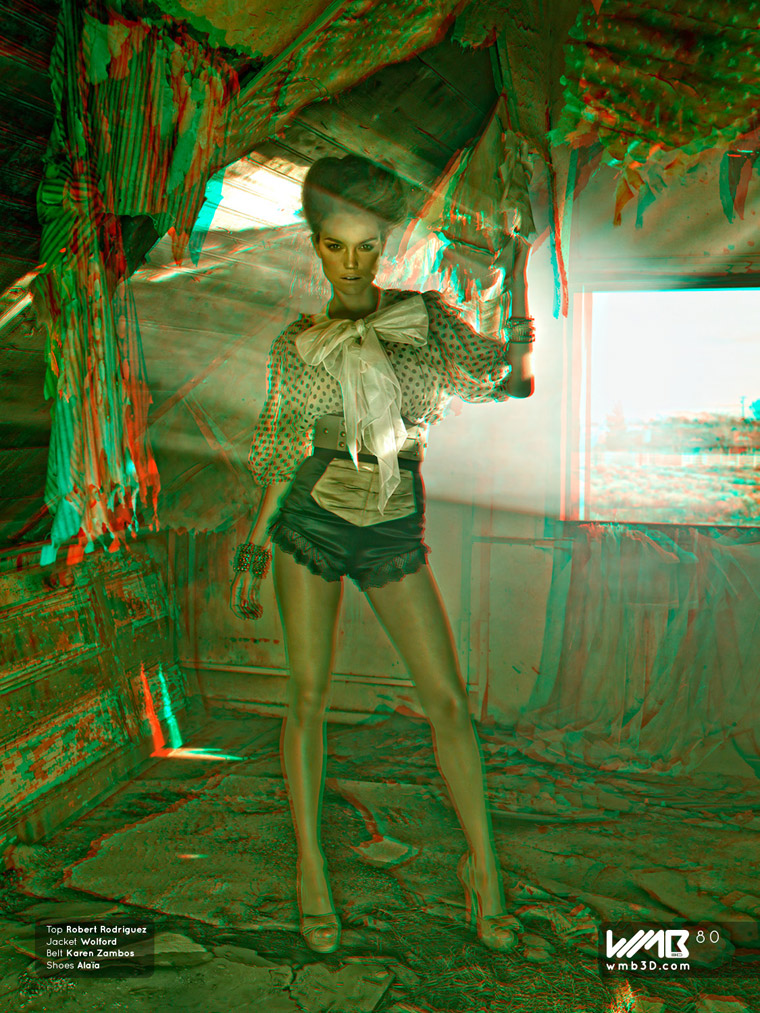
For the WMB 3D premiere issue fashion feature, we enlisted the help of celebrity fashion stylist Monica Rose and brought out Swedish fashion-model Therese Fischer for an apocalyptic shoot at an abandoned mining town. The first 3 images are from the 2D version of WMB, and the last image (Therese standing) is in 3D. This shoot has been getting a ton of circulation in the fashion world so I decided it deserved it’s own blog post.
Check out these great behind-the-scenes pics and video, and see the full fashion feature, Nuclear Summer, in Issue 1 of WMB 3D!
CREDITS:
Photography by NICK SAGLIMBENI
Fashion Stylist MONICA ROSE
Make-up by GABY RAMOS
Hair by ASHLEE ROSE for ArtMix Beauty
Production stills by JOYCE PARK for SlickforceStudio
E! News breaks the story of World’s Most Beautiful 3D!
Thanks to the help of my wonderful friends at E! News, the secret is out! The whole world now knows about WMB 3D: World’s Most Beautiful! The E! Online announcement coupled with the primetime E! News broadcast brought in so much traffic it crashed the entire family of Slickforce servers. And thanks to my stellar IT team, we were back up in a matter of minutes. Now that’s what you call one of those good problems.
The first look at WMB – World’s Most Beautiful
Hey guys, here’s a sneak peek at something really cool my team and I have been working on for the past year. This is the most rewarding project I’ve ever worked on, and it’s easily the most fun I’ve ever had as an artist. Thanks to everyone involved, many of whom will likely be familiar faces to you…more details coming soon. Enjoy!
On Top of the World at PhotoKamp 2
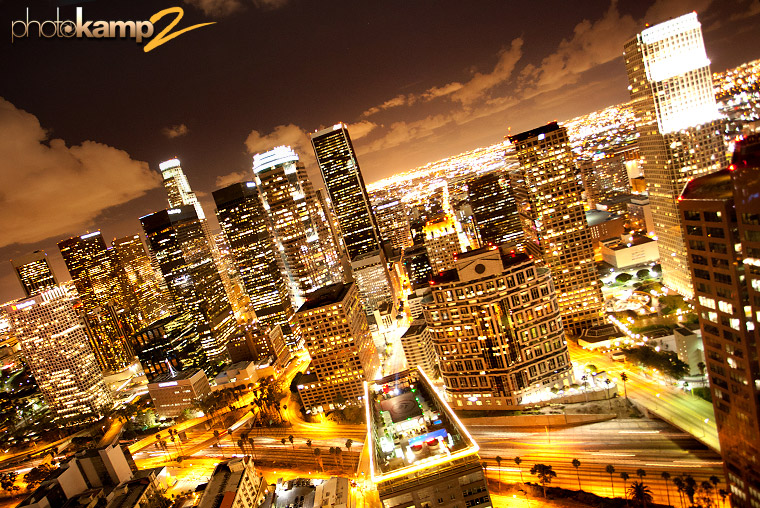
Last month we held our second PhotoKamp in Los Angeles. Students flew in from all over the US—including 2 graduates from PhotoKamp I—and from as far as the UK this year, which was both awesome and flattering. The three-day photography workshop is designed to teach up-and-coming photographers how to handle professional photography and lighting equipment, direct models to desired results, and light subjects in difficult situations.
On Friday evening, I took the photographers atop a downtown skyscraper, where they captured the LA skyline from sunset to night, and the results were incredible—especially in an era where even consumer-level cameras feature respectable sensor sizes, robust ISO latitude, and long-exposure capabilities. After the rooftop shoot, we headed indoors to a warmer meeting area where my amazing team arranged dinner during an informal Q&A session between me and the students.
On Saturday, we met at SlickforceStudio for an in-depth lesson in professional grip and lighting equipment. We also discussed budget-friendly options, which allow for amazing lighting setups at under $100. It’s always fun to see the wheels turning in the students heads as they learn about new equipment and contemplate exciting lighting setups based on their newfound knowledge. Each student then rotated between the positions of photographer, camera assistant/tech, lighting assistant, and fan operator (always the most fun.) Two models posed for the photographers, allowing for each student to have two full hours per day as photographer, in charge of the entire set. They chose the models’ wardrobe, directed their team and the hair & make-up crew, experimented with lighting, and built sets.
On Sunday, we awoke early and carpooled to Ultimate Graveyard in the Mojave desert. Two new models joined us, and while they were in hair and make-up, I showed the photographers solutions for dealing with harsh sunlight and extreme contrast, as well as safetying equipment in high-wind environments and using generators on location. Everyone always has so much fun out in the desert, and there is nothing better than seeing new photographers get excited about cool locations, as I have since the first day I picked up a camera.
For more info and upcoming dates, visit the PhotoKamp site!
Special thanks to Kevin Savarese for coordinating the weekend, the SlickforceStudio staff and amazing interns for their support, and to Joyce Park & Derek Eskridge for these fantastic images!
Travelogue: VENEZUELA — Lazy Days & The Perfect Storm
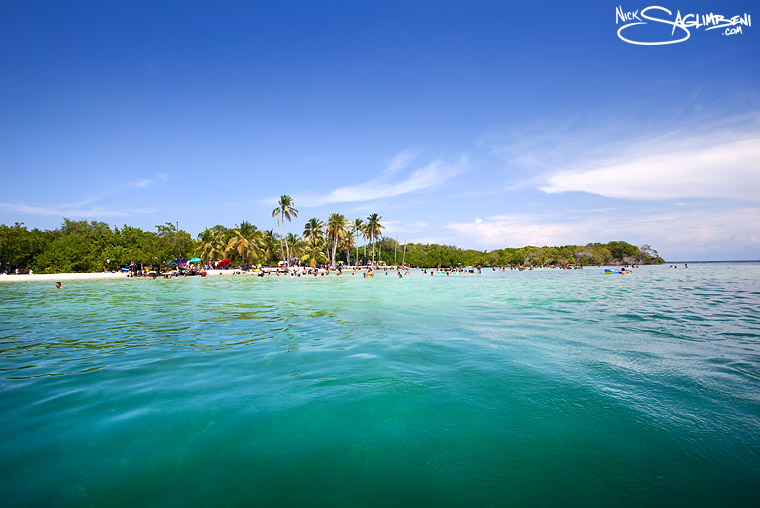
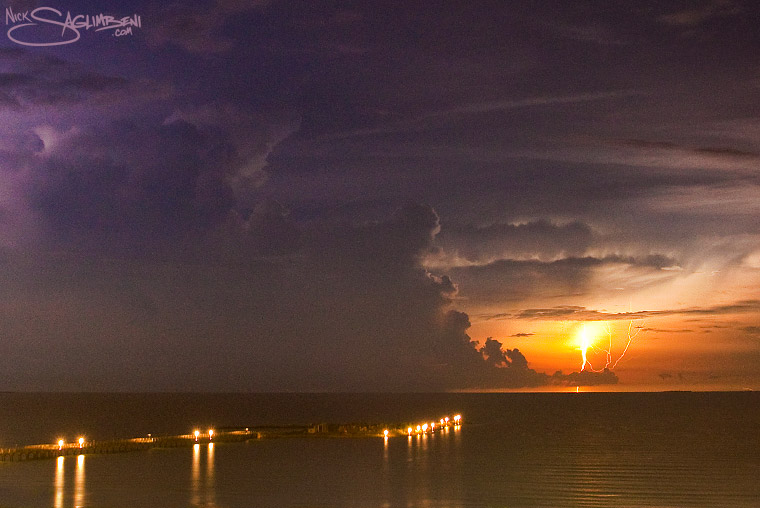
I can remember growing up, watching the Miss Universe pageant, and thinking “How is Miss Venezuela always so hot?” It was fitting, then, that my first trip to South America was to Venezuela.
I didn’t know much about the country before my trip, other than that I was likely to find beautiful scenery and even more beautiful people. And I was right on both accounts. The Venezuelan people were extremely friendly and welcoming, and the weather was…well, I’d say perfect…but when you’re right on the equator like that, sometimes it’s actually so hot and humid that your eyebrows sweat. So let’s just say almost perfect.
Though the country itself was breathtaking, I found a few things to be absolutely magical. The first, was that there were secret beaches, like in that Leonardo DiCaprio movie The Beach. We took a boat from the coast and headed out to sea, in the general direction of Puerto Rico. On the way, we passed an eerie bird sanctuary on a huge island where humans are strictly forbidden. Try to picture this: thousands of birds circling an island, all types and colors and sizes. And there are mean-looking aggressive vulture-like (sorry, I’m not an ornithologist) birds working guard-duty around the perimeter of the island. And they just look at you, like, “You know you can’t come in here, right? Keep moving.” But if you look past the evil guard birds (pictured above), it’s like Jurassic Park inside. Birds just playing, chasing each other, without a care in the world.
So we move past the bird kingdom and continue to boat out to sea for another 30 minutes. And then, a tiny dot on the horizon appears. And soon the horizon becomes an island. And as you get closer, you see people partying in the ocean surrounding the island. Again, not on the beach, but in the waist-deep crystal-clear ocean. And they are drinking liquor and serving food and selling jewelry and sunglasses from styrofoam trays in the ocean. A guy even ran my credit card from a floating tray! How does that happen?? It was an entire community at sea…like Atlantis, minus the mermaids and underwater castles. So maybe if Atlantis had a small college town, it’d be like that. Still…magic.
The next visually-stunning event, which happened completely by chance, was an amazing lightning storm, the likes of which I’ve never seen in my life. It started around 2am, so I scurried to the roof of my hotel and took some long exposures. In hindsight, I wish I could have gotten closer (with lenses, silly), but then again, you never know where lighting will strike so I covered the shots pretty wide.
I had hoped to visit Angel Falls, the tallest waterfall in the world, but alas I discovered it was a weeklong round-trip with lots of trekking involved, and I didn’t have the time on this journey. So, I’ll look forward to coming back for sure.
Special thanks to the wonderful Daniela and Dayda for taking care of me in Valencia, and to Roberto for the stay in Tuacacas. I am blessed to have so many wonderful friends all around the world.
Travelogue: KENYA — Of Sacred Forests and Monkeys

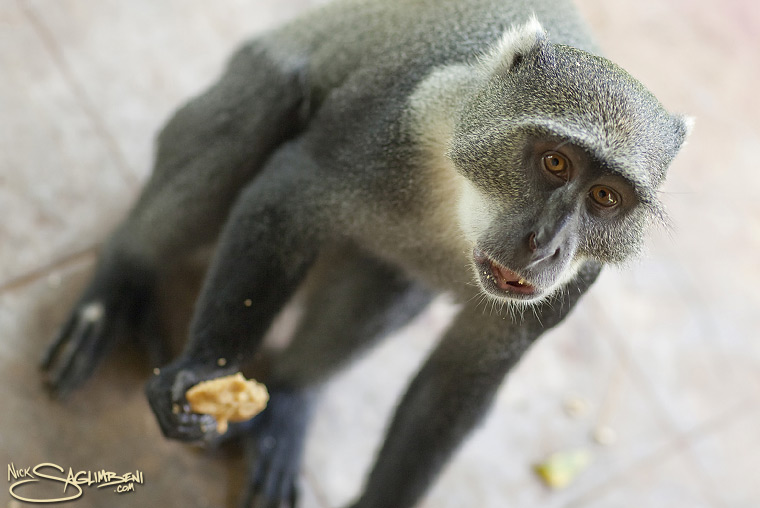
Though I certainly found my safari and my experience living with Maasai to be mind-blowing, I must confess that if I had to sum up my trip to Kenya in one word, it would be a very easy answer: monkeys.
My beach hut, though mere steps from the Indian Ocean, was surrounded by giant trees—palms, baobab, and mangrove—which were homes to families of monkeys. The monkeys were eerily intelligent, and they would watch you—study you—like cynical mini-humans, trying to determine if you were something to fear. Much to my surprise, I befriended a few of of the gray Sykes monkeys—the black-and-white Colobus monkeys didn’t care for me very much. By the end of my trip, I would walk out onto my porch, shout some wild animal call into the sky, and a half-dozen or so monkeys would literally drop out of the trees, hanging by their tails, and hop onto my front porch. There they sat, patiently waiting, like dogs without the barking, until I produced some fruit from a bag—which they took from my hand, and sat there quietly and ate. I had never seen anything like it. They happily ate my bananas, apples…even my cookies! The sheer interaction with the monkeys alone put my safari experience to shame.
I also made a point to visit Kaya Kinondo, one of the actual sacred forests that the forests in Avatar were based on. The trees were out of this world, with roots growing in all directions, even up. The forest contained medicinal trees, plants used for cooking and spices, and even some foliage reserved for rituals to the gods. It was a peaceful place, and I could see how generations of Digo tribes were able to find their spiritual center here.
When I returned home to my beach hut that night, I was shocked to find the place had been trashed—and I knew someone had broken in. Strangely, my camera and my laptop were untouched, but surrounding the overturned furniture there were banana peels everywhere. Who would break into my house, I thought, eat all of my bananas and leave my Canon 5D? Then it hit me: I had been robbed by monkeys.
INDEX:
Top Images: Kaya Kinondo, Sykes monkey eating my cookie
1-5: Kaya Kindondo, the sacred forest
6: My beach hut in Diani
7: Black-and-white colobus monkeys
8-14: My Sykes monkey friends, eating all of my food
Travelogue: KENYA — The Coast, Nights in Africa
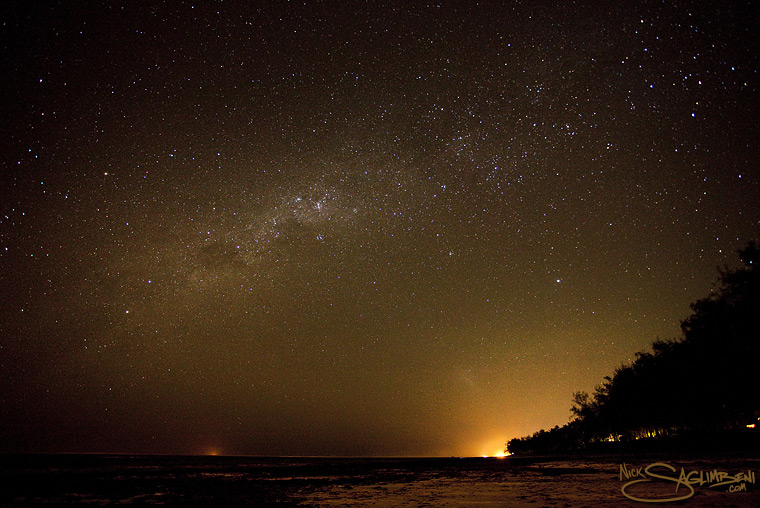
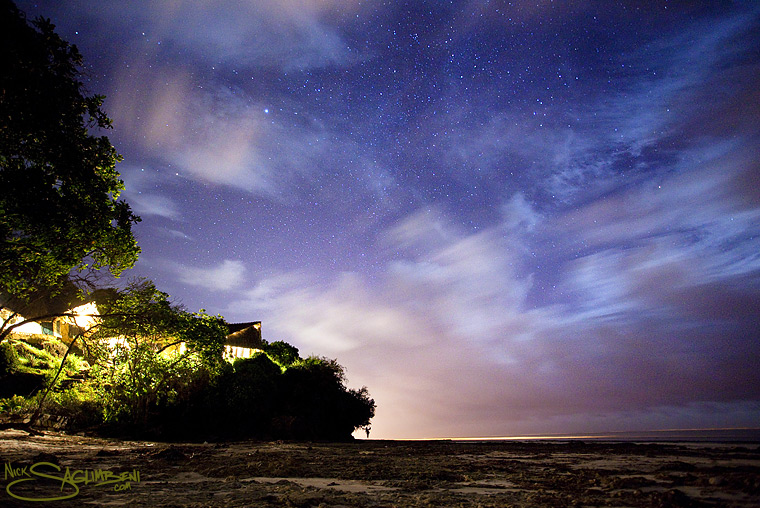
It’s safe to say that the Kenyan coast is the closest thing I’ve found to paradise. After my excursions around Nairobi and inland, I decided to head to the coast for something a little more tranquil. I took an overnight train from Nairobi to Mombasa, which was awesome…one of those old rickety sleeper cars…I felt like I was on the Orient Express. I found Mombasa a bit too crowded and commercial for my taste, so I headed south to Diani beach, an hour or so away from the Tanzanian border. Once I arrived, I knew within minutes that I had found what I was looking for.
I rented a 2-bedroom beach hut, just steps from the Indian Ocean, for under $50/night. I couldn’t believe it. Every morning, a fisherman named Ali would come to my door and sell me fresh fish, and I bought fruits and vegetables from a local farmer. I’d never had passion fruit before, and it instantly became my favorite fruit ever. It was the healthiest menu I had ever eaten. Around Diani were many wildlife sanctuaries. Among them was Shimba Hills, where I spotted the rare sable antelope, only found two places in the world. I reminded myself, however, that I came here to relax, so I made a point not to burn myself out sightseeing.
The beaches were perfect, white sand as far as the eye could see, and not a soul on them, save a few trinket peddlers. The ocean was unbelievably warm, so when I wasn’t vegging out on the beach, I made sure to get in lots of scuba diving. I made friends easily in Diani—people were incredibly welcoming and sincere. I even managed to find a crew eerily similar to my friends back home, which made me often forget I was on the other side of the world.
There are no words to describe the nights on the coast. Just take a look at the pictures and you’ll understand why. Barely any light pollution allowed for the brightest stars and the most incredible astral photography. Every night I would stumble blindly from my hut to the beach in the pitch black, where I set up my camera for night shots. I couldn’t believe the exposures I was getting, and it further cemented my love for Kenya. Tutaonana, inshallah.
INDEX:
1-4: Night train to Mombasa, that #2 shot is a 30-second exposure at 3am.
5-8: Shimba Hills, grasshopper, sable antelope, elephants
9: My beach hut in Diani
10: The view from my beach house
11-15: My shade sanctuary, white sand beaches
16: My friends in Diani: Didi, Gitz, Sidney, Ali Khan
17-21: Nightfall on the Kenyan Coast
Travelogue: KENYA — Living with the Maasai
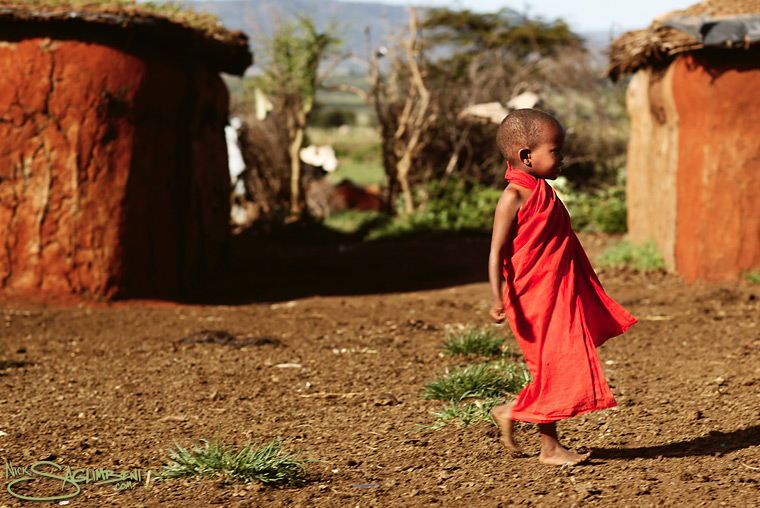
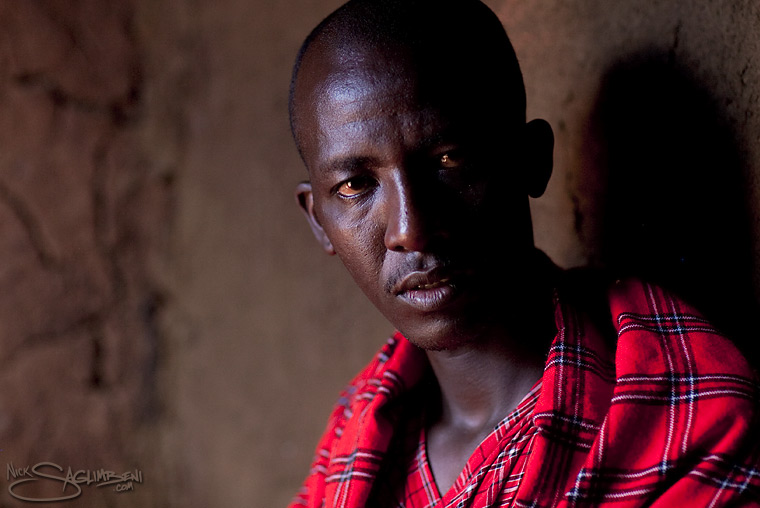
I can see it so clearly. I’m 8 years old, and I’m in the Pleasant Plains elementary school library. I’m looking through my first National Geographic, and that’s when I see it—my first African tribe. I knew it right then: I had to get there—I was going to go live with them, learn their language, dress in their clothes, and do my darndest to become one of them. That was my dream, anyway.
So last month, while I’m on safari in Kenya at the Masai Mara wildlife preserve, I ask my driver if he can put me in touch with a local village chief (mzeé). He thought I was a bit nuts, but he came through with flying colors. He found me a guide who not only lives in a nearby Maasai tribal village (manyatta), but actually speaks a bit of English thanks to working nights as a safari camp security guard. I meet my guide, Meingati, the next morning, and he introduces me to the son of the chief, Kamwana (the chief was visiting friends in another village). Kamwana gives me a price to hang out in the village for an hour and take pictures. I tell him politely, no thank you—I want the real deal. So he agrees to let me stay in the village for two days, and it only costs me a cow.
My new friends welcomed me to Oltepesi village. They introduced me to members of their tribe, and showed me the usual tourist displays, like how to make fire, and a few tribal dances, including the ceremonial jumping, where men compete for brides by seeing who can jump the highest (seriously). I finally convinced them they didn’t need to entertain me—I just wanted to kick it with them however they, well, kick it. So we went off into the bush, tracked antelope by their poop, brushed our teeth with frayed sticks, and sat in the shade dodging the heat of the sun and napping. Then, we went to the Maasai market, which only happens once a week—I considered my timing extremely lucky. Hundreds, if not thousands, of Maasai walk from villages as far as Tanzania, to barter, haggle, and shop for everything from goats and cows to weapons (daggers, staffs, bows and arrows, AWESOME! I felt like I was playing D&D). I met many of their friends, some from distant lands, and ALL extremely friendly. I used this as my opportunity to learn some of the local Maasai language (Ma), which is completely different from the Swahili spoken throughout Kenya. Among my favorites were “Ero Sopa” (a familiar ‘hello’), “Ashi ashi” (thank you), and “Olesére ölcheré” (goodbye friend).
When we got back to the village, I played with the children for nearly two hours. I was surprised that a few of them even understood a little English. I realized then that the indigenous tribes are in every bit as much danger of cultural extinction, perhaps more, than the animals in the neighboring plains are of a physical one. That night, I drank cow milk from a giant gourd, listened to tribal songs, and slept on a floating cowskin stretched between four poles—one of the best nights of sleep in my life. The dwelling I stayed in was incredibly well-constructed, built by the women in the village, who do all the construction and build the entire village themselves. I lay there on my cow-bed, in awe of the wonder of the world, and enamored with my surroundings. The cool cross-breezes put me to sleep in no time.
The next morning, Kamwana came to my dwelling. He had a noticeable confidence apart from the others in the village, one that can only come with knowing you’re going to be the next chief (and having five wives). He gave me a Maasai bracelet, beautifully and thoughtfully sewn together bead-by-bead, and a shúkà, the traditional cloth cape worn by the men. He also gave me a Maasai name: Sarúni, meaning ‘the helpful one.’ I left just before nightfall on the second day, thanking my friends and wishing them well—and hoping it would not be the last time I would see them. I didn’t take as many pictures as I thought I would have. I felt a barrage of photos would have turned my experience into little more than a circus, and I wanted to keep it as genuine as possible. Sometimes you just need to turn off the camera and actually live.
My time with the Maasai was a defining moment in my life, because it symbolized the completion of a childhood dream. I only hope that these tribes will still be around for future generations to dream about. Olesére, ölcheré.
INDEX:
TOP IMAGES: (1) Maasai boy in Oltepesi village, (2) my guide, Meingati
ROW 1
1: (left to right) Meingati, Kamwana, Yenku, unknown
2: Village girl and traditional Maasai home
3: Maasai women performing a ceremonial dance
4: Kamwana making fire
5: Looking to Tanzania
6: Welcoming me into the village
7: Inside Kamwana’s home (30 second exposure…it was pitch black until your eyes adjusted)
ROW 2
1: Drinking cow milk from a hollow gourd
2: Yenku
3: The future chief, Kamwana (right)
4-7: Oltepesi village children































































































































































